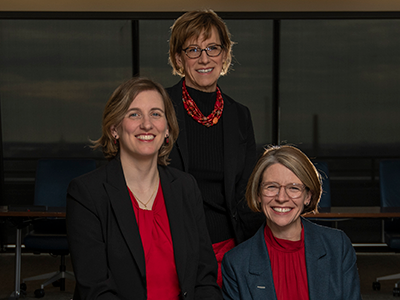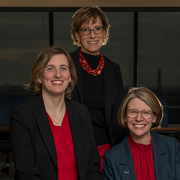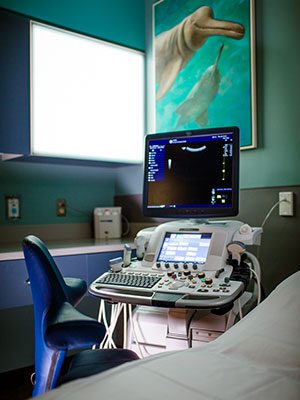Children’s National Hospital: Starting the new year with strong leadership

Drs. Tarini, Steinhorn and Beers are also in leadership roles within professional societies, elected by their peers, further highlighting the strength of the leadership at Children’s National and professional respect within the health care community.
Three Children’s National Hospital executives are also in leadership roles within professional societies, elected by their peers, further highlighting the strength of the leadership at Children’s National and professional respect within the health care community.
Lee Savio Beers, M.D., FAAP, medical director of Community Health and Advocacy at the Child Health Advocacy Institute (CHAI) at Children’s National, was elected by her peers to become president-elect of the American Academy of Pediatrics (AAP) beginning Jan. 1, 2020. Dr. Beers will then serve as AAP president in 2021 for a one-year term.
“I am humbled and honored to have the support of my peers in taking on this newest leadership role,” says Dr. Beers. “AAP has been a part of my life since I first became a pediatrician, and my many leadership roles in the DC chapter and national AAP have given me a glimpse of the collective good we pediatricians can accomplish by working together toward common strategic goals.”
Dr. Beers is looking forward to continuing her work bringing together the diverse voices of pediatricians, children and families as well as other organizations to support improving the health of all children.
Robin Steinhorn, M.D., senior vice president of the Center for Hospital-Based Specialties at Children’s National was elected by her peers to become Vice President and President-elect of the American Pediatric Society (APS) in May 2018 and she is currently serving her role as the Society’s president, which began in May 2019.
“This is a tremendous honor. I look forward to leveraging the collective leadership and research accomplishments by our members to improve the health of infants and children throughout the U.S.,” said Dr. Steinhorn.
Dr. Steinhorn is particularly passionate about mentoring faculty and supporting the growth and career development of young neonatologists and scientists, with several having developed their own research laboratories and assumed division and department leadership positions. She was selected as a ‘Top Doctor’ by Northern Virginia Magazine in 2019.
Beth A. Tarini, M.D., MS, associate director, Center for Translational Research at The Children’s Research Institute, became vice president of the Society for Pediatric Research (SPR) in May 2019. Dr. Tarini will transition to President-Elect in May 2020 and become President in May 2021.
Dr. Tarini’s personal mission during this tenure will be to ensure that more pediatric researchers get to know SPR and are so excited about the organization that they become active members.
Dr. Tarini says she looks forward to working with other SPR leaders to find ways to build more productive, collaborative professional networks among faculty, especially emerging junior faculty. “Facilitating ways to network for research and professional reasons across pediatric research is vital – albeit easier said than done. I have been told I’m a connector, so I hope to leverage that skill in this new role,” says Dr. Tarini.
READ MORE:
- Getting to know Lee Beers, M.D., FAAP, future president-elect of AAP
- Children’s National senior vice president elected to American Pediatric Society leadership
- Getting to know SPR’s future President, Beth Tarini, M.D., MS






